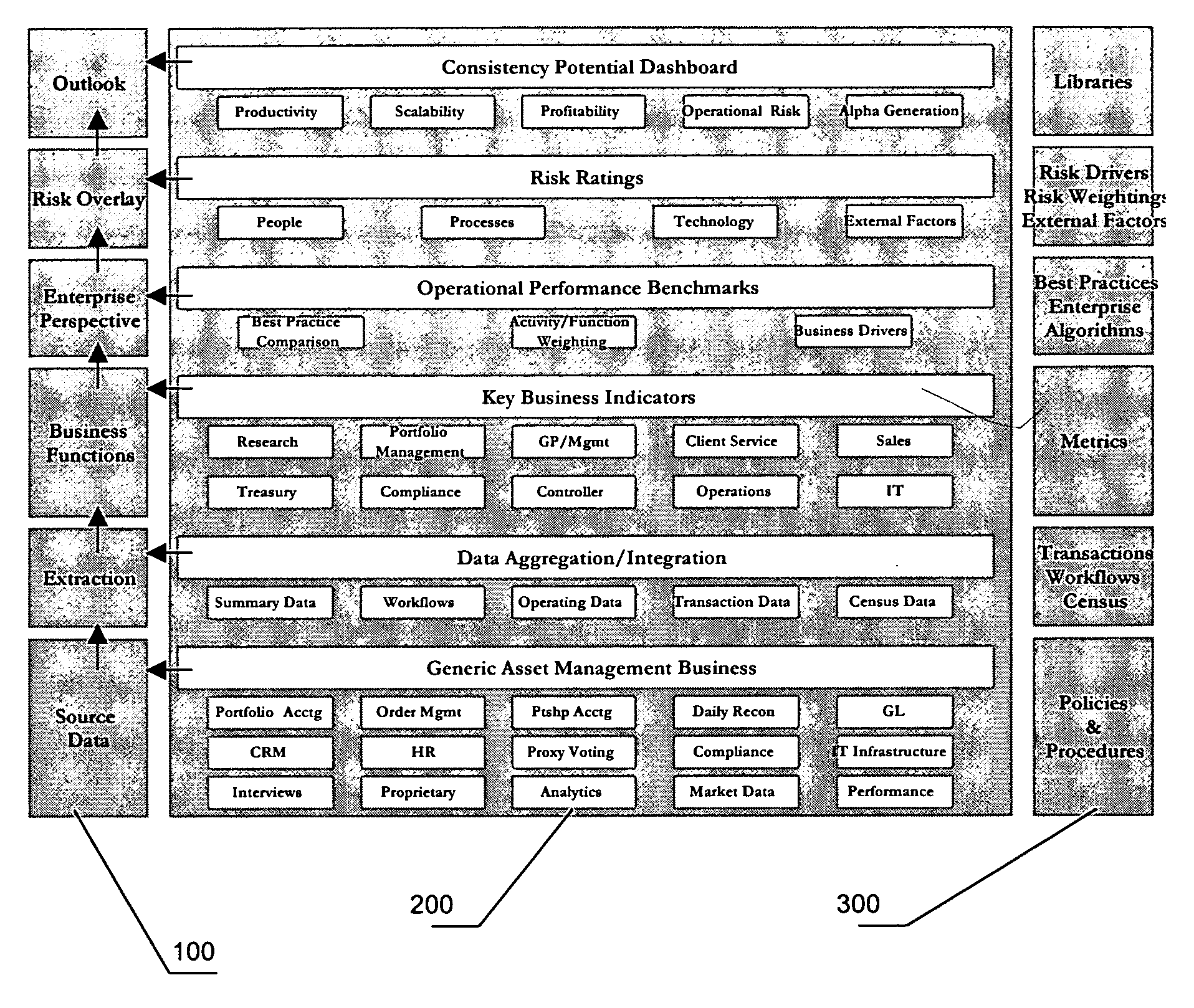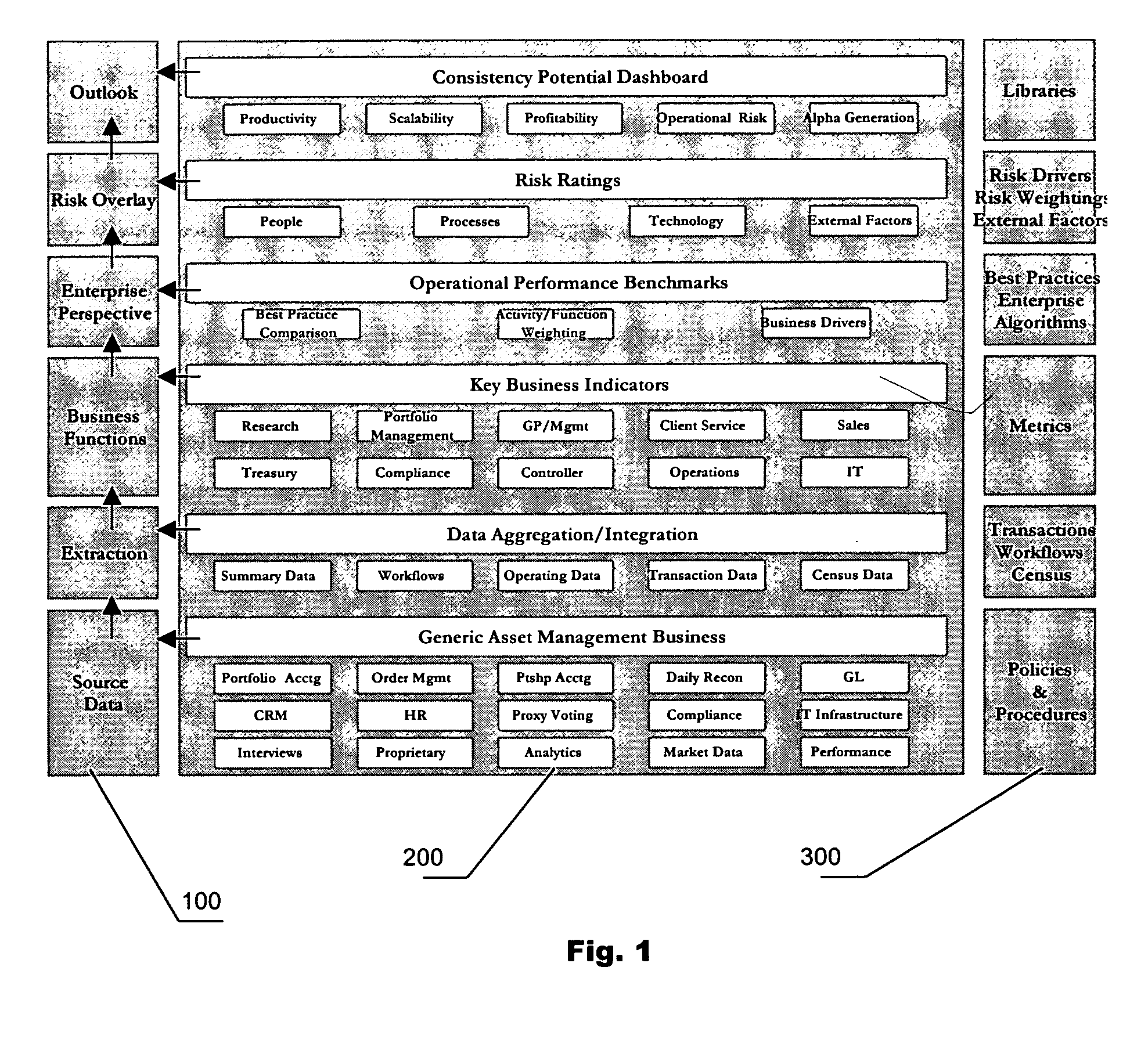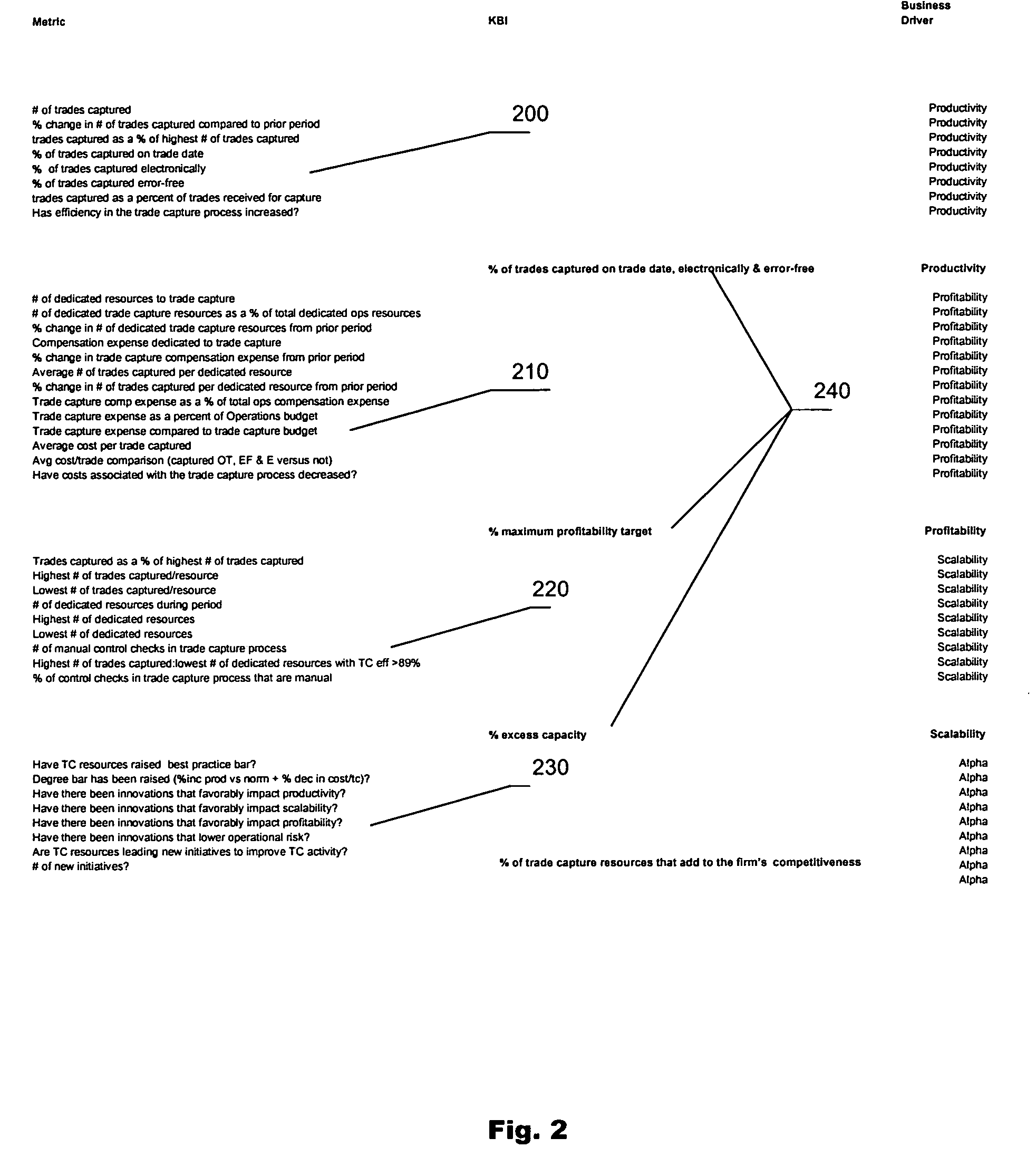Method for evaluating a business using experiential data
a business and experiential data technology, applied in the field of measuring the enterprise risk, performance and potential of financial services businesses, can solve the problems of little data, information or system to effectively manage investment businesses, and inability to meet the needs of business operations, etc., to achieve the effect of effective management of investment businesses
- Summary
- Abstract
- Description
- Claims
- Application Information
AI Technical Summary
Benefits of technology
Problems solved by technology
Method used
Image
Examples
Embodiment Construction
[0034]The present invention provides a method whereby the experiential data of a business is used to measure enterprise risk, performance, and the potential of the business to perform consistently over time. To do so, the method uses the experiential data of the business to fuel specific, predetermined mathematical functions, or metrics and algorithms, to measure specific drivers of the business being evaluated. For example, a set of drivers may include: productivity, scalability, profitability, alpha generation and operational risk; and ultimately the potential of the business.
[0035]The first step is gathering data. The data is compiled from the business processes supporting the functions and activities of the business being evaluated. Businesses are often thought of in terms of departments, however, the inventive method organizes a business by function and activity for greater specificity. Within each function is a sub-set of activities that make up the function. An exemplary set ...
PUM
 Login to View More
Login to View More Abstract
Description
Claims
Application Information
 Login to View More
Login to View More - R&D
- Intellectual Property
- Life Sciences
- Materials
- Tech Scout
- Unparalleled Data Quality
- Higher Quality Content
- 60% Fewer Hallucinations
Browse by: Latest US Patents, China's latest patents, Technical Efficacy Thesaurus, Application Domain, Technology Topic, Popular Technical Reports.
© 2025 PatSnap. All rights reserved.Legal|Privacy policy|Modern Slavery Act Transparency Statement|Sitemap|About US| Contact US: help@patsnap.com



